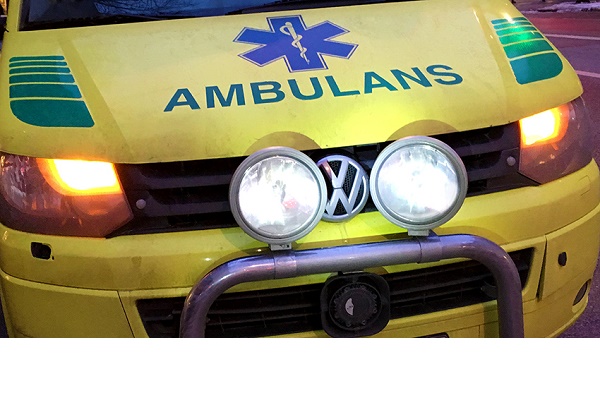

If you’ve ever been startled by the sudden appearance of an ambulance while blasting music in your car, then you appreciate the value of a loud siren. Fortunately, your car is probably equipped already to receive warning signals on its audio system, thanks to a new solution developed by students at KTH.
In Stockholm, ambulances will soon be piloting a system that interrupts whatever you’re listening to – be it CDs, Bluetooth or the radio – and broadcasts a voice warning that an emergency vehicle is heading your way.
Developed by students at KTH Royal Institute of Technology in Stockholm, the solution involves a radio transmission from the emergency vehicle to nearby FM tuners that are equipped with Radio Data System (RDS).
The signal is sent over the FM band along with the transmission of a text message that appears in the tuner display, says Florian Curinga, one of three students at KTH who developed the solution – called EVAM System – and founded a startup, H&E Solutions, to take it to market.
Crashes involving motorists who didn’t hear sirens are becoming more common thanks to improvements in sound insulation, Curinga says.
“Often drivers have only a few seconds to react and give way to emergency vehicles,” says Curinga’s partner, Mikael Erneberg, who also studies industrial engineering at KTH. “The optimal warning time is at least 10 to 15 seconds.”
Stockholm will begin testing their system in a limited number of emergency vehicles beginning in Q1 2017. “We want to catch motorists’ attention at an early stage, and mitigate stress that impairs road safety,” Erneberg says.
As long as the tuner is turned on, a voice message will broadcast on the system. Unlike lights and sirens, the warning system anticipates how far in advance messages need to be heard depending on the speed of local traffic. On a highway, for example, the signal will broadcast earlier than in slow city traffic.
Curinga says that the EVAM System would reach two-thirds of all vehicles on the road, and it can also warn of accidents along the route.
“It fulfills three functions: improving accessibility for first responders, improving road safety and make the working environment in transport better for vulnerable professions,” he says.
Peter Ardell/David Callahan
Infineon further strengthens its number one position in automotive microcontrollers and boosts systems capabilities for…
Rohde & Schwarz has achieved a significant milestone, receiving approval of detection capability from the…
April 8, 2025 - Avnet ASIC, a leading provider of ASIC and SoC full turnkey…
Acquisition expands Siemens’ offering in PCB design for the SMB market and enables greater process…
Wireless Communication Modules in innovative LED lighting systems Panasonic Industry Europe is proud to announce…
Company expands AI order-taking solution to tackle rising labor costs and improve customer experience Hi…